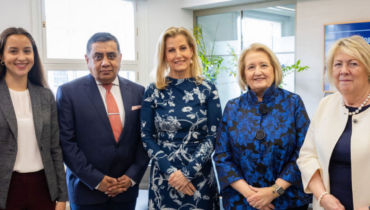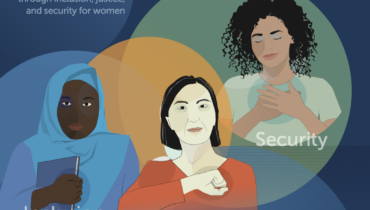Earlier this year, the United Nations Economic and Social Commission for Western Asia invited GIWPS Managing Director Jeni Klugman to deliver a multi-day training about how the Women, Peace and Security Index (WPS Index) can measure states’ achievements in advancing gender equality, peace and security.
The workshop focused on women’s status in the MENA (Middle East and North Africa) region, and how the WPS Index can prompt decision-makers to adopt evidence-based measures that contribute to women’s autonomy and empowerment in the community and in society.
“By highlighting gaps, flagging differences with neighboring countries, and looking at differences within a country, we can identify priorities and push for progress.”
The State of Women in the MENA Region
The WPS Index offers a picture of women’s inclusion, justice and security at a regional level, in addition to the country level.
MENA fared the worst across all regions on the 2019 WPS Index, performing poorly on legal discrimination (divorce, inheritance, contracts, etc.) and discriminatory norms (men do not feel it is acceptable for women to work). The region also scored below the global average on women’s parliamentary representation, and around 10 MENA countries scored below the global average in terms of the gender gap in paid employment.
One bright spot was relatively high levels of women’s cellphone use, which is an important indicator of connectivity and potential to access financial services. The region also outperformed the global average on women feeling safe walking alone at night in their communities, and was close to the global average when it comes to education.
Looking at patterns across the region, UAE scored highest, and Yemen was at the bottom.
By highlighting gaps, flagging differences with neighboring countries, and looking at differences within a country, we can identify priorities and push for progress.
Gender Inequalities within MENA Nations
The second day of the workshop featured country-specific presentations, inspired by Georgetown’s subnational WPS indices for the United States, China, Nigeria, and India (with Afghanistan and Pakistan forthcoming in the 2021 report.)
Participants—a mix of scholars, gender and WPS experts, activists, legal specialists, researchers, statisticians, and UN representatives—were asked to review a country’s performance on the WPS Index and compile relevant data for as many localities as possible to reveal subnational differences in women’s status. Presenting countries included: Yemen, Kuwait, Sultanate of Oman, Morocco, The UAE, Jordan, Tunisia, Egypt, and Palestine.
Presentation of Yemen
Yemen ranks last on the 2019 WPS Index. According to statistics, women average only 1.9 years of education compared to 11.9 years in the UAE. Only 5.3% of women are in paid employment, compared to 64.2% of women in Kuwait. And women hold only 1% of seats in parliament. Key challenges include widespread acceptance of physical violence against women, and by virtue of family law, women should obey their husbands. There is no law that criminalizes domestic violence and marital rape is not acknowledged.
The presentation, by the Ministry of Social Affairs (MOSA), highlighted differences in findings between rural and urban governorates, where governorates that are governed by local authorities fare better and are more progressive than those governed by norms and tribes.
The importance of coordination between the statistical office and local authorities was underlined during the presentation. The MOSA has a national action plan regarding the WPS agenda, and they are seeking funds to put this plan into action to address gaps and advance the status of women and girls in Yemen.
Presentation of Morocco
According to the 2019 WPS Index, Morocco ranks 133 out of 167 nations on women’s inclusion, justice, and security.
Around 85% of women had cell phones, but only 22% participated in the labor force. It was noted that 21% of women and 25% of men believe that the husband has the right to beat his wife if she leaves the house without his permission.
Statistical data showed huge disparities across the 12 governorates in Morocco across most of the indicators. These inequalities can be attributed to urban- rural gaps, economic and security factors, and the decentralized system in the country.
National action plans and programs are being undertaken to address the gaps between governorates.
In reflecting on the event, Dr. Klugman said that “The workshop was a great opportunity to jointly explore the ways in which the WPS Index can cast light on key gaps and challenges, while highlighting the importance of data and accountability for policy. The upcoming 2021 global report will be an occasion to review progress and continuing gaps, and how women in countries across the region have been faring.”
Sarah Rutherford is the Director of Communications and External Affairs at the Georgetown Institute for Women, Peace and Security.


